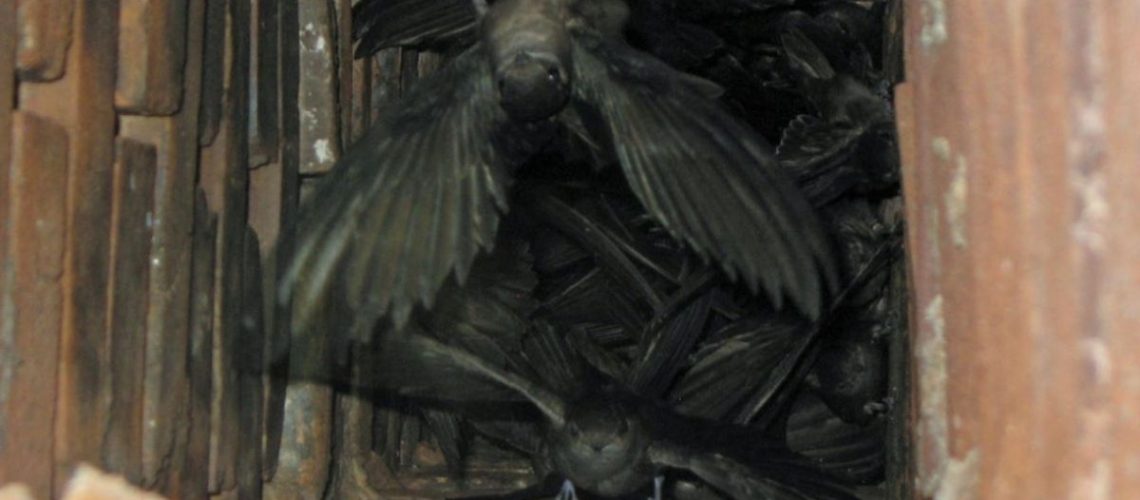Chimney Swifts in Central Virginia
If see the fast-moving birds late in the afternoons and early evenings in the summer you know about chimney swifts.
If you have heard the sounds of baby birds chirping coming from your chimney, you probably have chimney swifts. If you are hearing birds chirping, there is a good chance you may have a nest in your chimney. Once Chimney swifts have nested and they have hatched babies, they are about 10 days away from fledgling their brood. If you know you have swifts in your chimney keep the damper closed and call us at Black Goose Chimney Service to have them safely removed.
Chimney swifts live where there are plenty of flying insects to eat. They can eat in average over 10,000 flying inspects everyday.
Chimney Swifts are known for their ‘flying cigar’ shape and their flight and nesting patterns have made their feet evolve so they don’t perch on level surfaces like most birds, hence the need for enclosed vertical spaces to nest.
However, Chimney Swifts are protected by federal law in the Migratory Bird Treaty Act. This means you could be facing fines for removing them on your own. Black Goose Chimney Service are experts in removing chimney swifts. Call us today to schedule an inspection and develop a plan for removing chimney swifts (and ant other critters you may have in your chimney).
Why do Chimney Swifts choose chimneys?
In a natural habitat, hollow trees are preferred places for chimney swifts and birds to build their nests. However, because many trees have been cut down, a chimney is the next best thing to a hollow tree. Chimney swifts are not like other birds. They cannot stand upright or perch, so they must find a chimney or similar structure is perfect for them to build nests and raise their families.
Chimney Swifts need a protected vertical structure for nesting during the spring and summer. They will migrate each year to South America.
There are chimney swift towers that can be a DIY project to provide a habitat that is conducive to their nesting needs, which does not include your chimney.
With numerous options available for protecting your chimney you can call us today to find out how you can protect your chimney from chimney swifts today. Black Goose Chimney Service has been helping people remove chimney swifts from their chimneys for over 20 years.
Why are chimney swifts protected under the Migratory Bird Treaty Act?
Federal protection of these migratory birds was established in 1918 to prevent them from becoming endangered species. Under this act, anyone who knowingly removes, disturbs, or destroys chimney swifts and/or their nests that contain eggs or baby birds could face high penalty fines. At Black Goose Chimney Service, we can work with you to develop a plan to remove the chimney swifts safely and legally. Call us today to schedule an inspection.
What Can I Do to Prevent Chimney Swifts from making their Nest in My Chimney?
When it comes to preventative solutions for Chimney Swifts there are a number of solutions. Depending on the type of chimney you have you may have more than one option.
- Chimney Cap – A chimney cap is the best protection from chimney swifts making nests. Chimney caps can fit a number of different types and styles of chimneys.
- Chimney Cap & Crown – A cap and crown will vary depending on the type of chimney you have. A chimney cap and crown will extend the life of your chimney and provide protection from all critters, not just chimney swifts.
Removing Chimney Swifts from My Chimney
Chimney swifts are migratory birds. They migrate to South America each fall. When it comes to removing chimney swifts, you have more options than you think. Contact us at Black Goose Chimney if you think you have chimney swifts.

